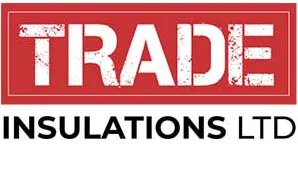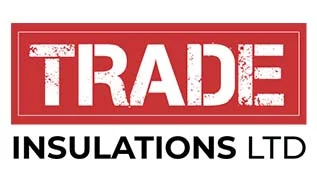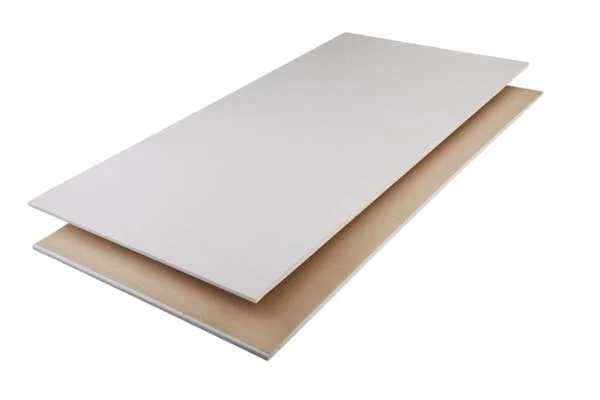No products in the basket.
Return To ShopGyproc Wallboard Plasterboard
British Gypsum Gyproc Wallboards are plasterboards that are made up of a high-quality aerated Gyproc core and bonded to strong paper liner facings designed to be installed in multiple application methods including wall and ceiling applications within residential or commercial buildings. The wallboards are available in lengths from 1800mm to 3600mm and widths from 900mm to 1200mm in three standard thicknesses, 9.5mm, 12.5mm, and 15mm.
Showing all 5 results
British Gypsum Gyproc Wallboards are made up of a high-quality aerated Gyproc core and bonded to strong paper liner facings designed to be installed in multiple application methods including wall and ceiling applications within residential or commercial buildings. The wallboards are available in lengths from 1800mm to 3600mm and widths from 900mm to 1200mm in three standard thicknesses, 9.5mm, 12.5mm, and 15mm. This product is lightweight and easy to cut handle and install. Boards are available in either a squared edge or a tapered edge depending on the product size. This board offers fast, simple, and effective solutions for drylining new and existing backgrounds in a wide range of buildings with an attractive and professional finish.
KEY FEATURES:
- Available for new builds or refurbishments
- Resists fire to allowing extended time to evacuate
- Fully recyclable
- Contributes to acoustic improvements
- Light Ivory paper facing
- The boards can be fixed with drywall screws and adhesive
- Suitable for direct decoration
- High resistance to deformation
- Singular or multiple layer applications
- Accepts wide range of paint and finishing products
- Easily finished with thistle plaster or Gyproc joining materials
British Gypsum offers a range of plasterboard materials including Gyproc Wallboards, Gyproc Moisture Resistant boards, Gyproc Fireline, Gyproc Soundbloc, Gyproc Thermaline PIR, Gyproc Thirmaline+, and Thirmaline Basic boards. All boards are versatile and provide a high-performance finish for all building interiors. Different boards can be applied for specific needs such as sound control, fire protection and moisture-resistance. Wallboards are an extremely popular product within the construction industry and used by builders, contractors, and even do-it-yourself projects. This wide range means there is a board for every job.
The boards can be cut by scoring one side of the board with a sharp knife, snapping over a hard edge, and scoring the other side. The boards can also be measured to size and cut with a plasterboard saw. Holes for sockets etc can be cut with a utility saw. Protective gear is recommended when using Gyproc wallboards due to the dust produced when cutting the materials. This includes gloves, eye protection goggles, protective clothing, and gloves.
The Wallboards should be stored in a dry environment, on a flat surface. If boards are outside be sure to cover them with the correct weatherproofing materials. If boards are made wet, do not use. This product can be recycled providing it has not been contaminated by non-gypsum materials.
Gyproc Wallboards can be installed in a range of methods. These methods include:
- Wall applications
- Timber or metal partition wall applications
- Ceiling applications
- Brick or masonry backgrounds
Please see below our Gyproc Wallboard datasheet and safety regulations.
Safety Certifications:
- EN 520:2004+A1:2009, Type A
- Reaction to fire: A2-s1, d0
- BES 6001 classification: Excellent
- ISO 9001 Quality Management
- ISO 45001 Occupational Health and Safety Management
- ISO14001 Environmental Management
- ISO 50001 Energy Management
More Information:
Length: 900mm, 1200mm
Width: 1800mm, 2300mm, 2400mm, 2500mm, 2700mm, 3000mm, 3600mm
Thicknesses: 9.5mm, 12.5mm, 15mm
Thermal Conductivity: 0.19W/mK
Material: Gypsum, Paper Lined
Colour: Ivory, Brown
Datasheet:
| Thickness | Thermal Conductivity (w/Mk) | Width (mm) | Length (mm) |
| 9.5 | 0.19 | 900, 1200 | 1800, 2400, 3000 |
| 12.5 | 0.19 | 900, 1200 | 1800, 2300, 2400, 2500, 2700, 3000, 3600 |
| 150.19 | 900, 1200 | 1800, 2400, 2700, 2800, 3000 |
How To Install Gyproc Wallboard
Start by measuring and cutting your wallboard to size to fit the relevant area. The boards should be installed horizontally. Ensure the boards line up with the existing timber or metal frame to allow the fixings to hold.
The boards should be fixed with the decorative side facing outwards from the wall to receive flush finishes. Fixings should be installed at least 13mm from cut edges and 10mm from bound (un-cut) edges. Wherever possible position cut edges at inside angles. Stagger horizontal and vertical joints between layers by at least 600mm.
After fixing the boards in place, start adding finishings as soon as you can to reduce the risk of damage or UV degradation to the paper linings. The board can be finished using jointing systems that comply with EN13963, including the British Gypsum Gyproc range. Ensure corner beads are fitted using the required fixings and joint tape is added to any adjoining boards to avoid cracks and scuffs when finishing.
After fixing the boards in place and jointing step have been applied, start adding surface finishings as soon as you can to reduce the risk of damage or UV degradation to the paper linings. You can finish the board using plaster that complies with EN13279-1, including the British Gypsum Thistle range.
After the finishings have been applied and dry, start decorating as soon as possible. Finish jointing systems with Gyproc Drywall Primer before applying paint.
Alternatively, after the finishing system is dry, the decoration stage should begin as soon as possible. Jointing systems should be finished with Gyproc Drywall Sealer before application of wall coverings.
For minor damage and dents, first check that the boards core isn't shattered. If the boards core is intact, the damaged area can be filled with Gyproc EasiFill 60, allow it to set, a second coat can then be applied if needed. When the filler is dry, sand it to a smooth finish before redecorating the repaired area. For a damaged core, broken edges or extensive damage, repair and replacement procedures differ depending on the number of board layers and fire resistance of the system.



